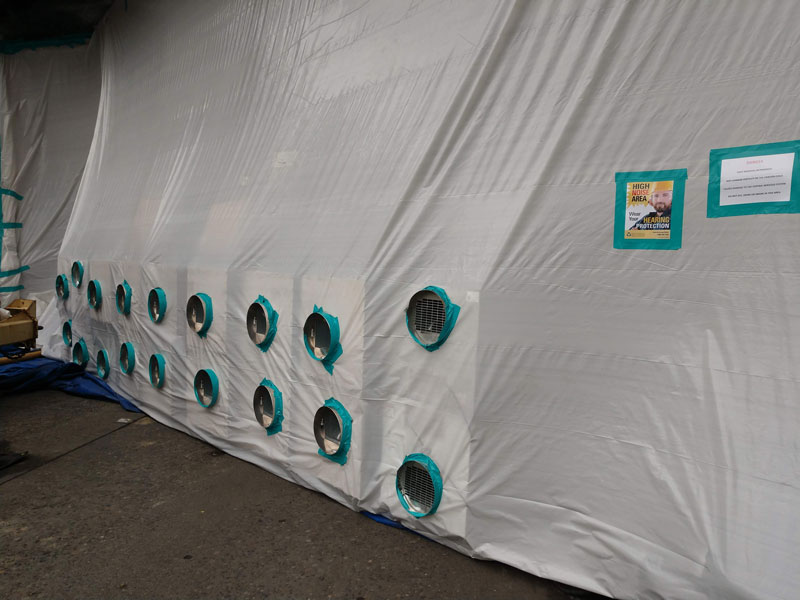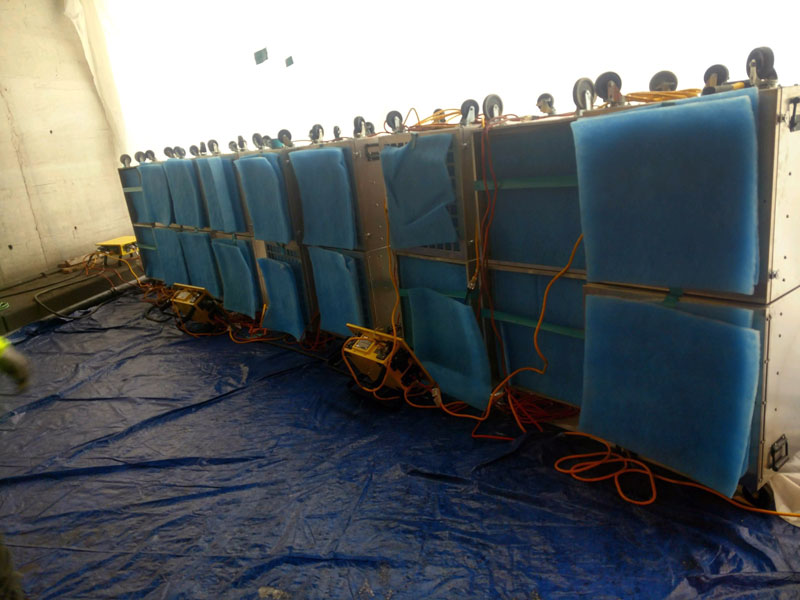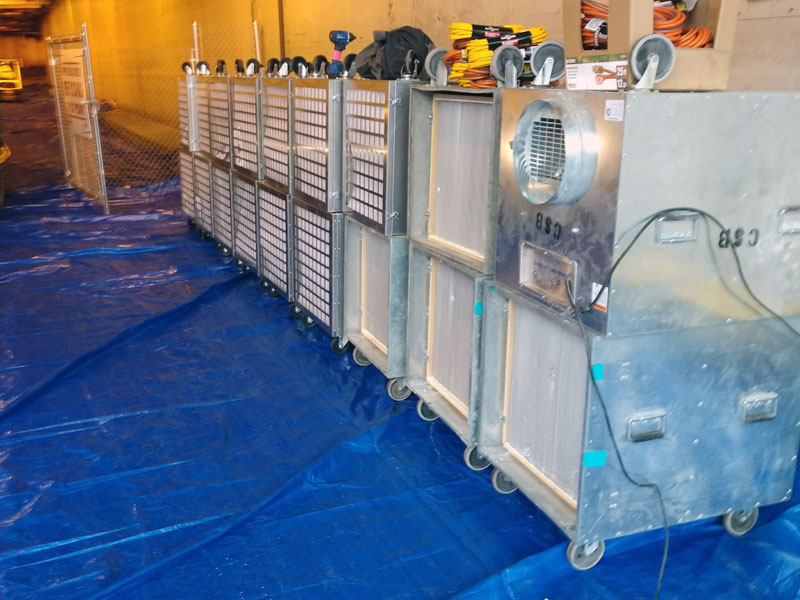Containment and Cleanup

“Give me 6 hours to chop down a tree and I will spend the first four sharpening the axe”. - Abraham Lincoln.
Fifty percent of our work can be just preparation and cleaning. A lot of our projects have delicate items adjacent to our work whether it be people on the outside of our containment, fully finished surfaces, or sensitive equipment. In addition, some of our work requires keeping hazardous materials such as lead and silica inside the work area. Containment is king for much of the work that we do.
Containment
What is containment? Can’t I just throw up a couple of pieces of plywood to protect the adjacent surface? The answer is usually no. Much of the reason for a good containment is to protect others from inhaling dust or contaminants. Calculations are made to determine the proper amount of air exchanges based on the volume of space and the number of negative air machines. These machines can be fitted with HEPA filters or high-volume particulate filters depending on the material. This in turn helps keep the PEL (permissible exposure limit) low so that our workers are not being exposed to the hazards that are getting airborne through our work.
Here are pictures of a large-scale project where we were tasked with removing soot from the ceiling. The work area under containment was substantial so we had to divide the work into six sections and use 18 negative air units. That’s a lot!

We also calculated how often the HEPA filters needed to be changed so we weren’t overtaking them with dust and contaminants. A manometer was used to ensure our containment was effective. This tool measures the pressure differential from inside to outside. While blasting we had a 3rd party vendor conduct air monitoring.

Cleaning
Our entire field team has HAZWOPER 40 (Hazardous Waste Operations and Emergency Response) training. Certain jobs and job sites require this certification as part of the cleanup efforts when hazardous substances are involved.
For specific cleanup efforts our team is heavily trained in Lead removal and abatement. The field team are all Certified Lead Workers (16h training class). In addition we have a Certified Lead Supervisor (32hr) on staff and two RRP (Renovation ,Repair and Painting) certified members. Our firm is LBP and RRP certified so we can conduct Lead work for both commercial and residential projects including those that fall under HUD regulations.
With these certifications no matter how we complete the work, we are required to clean to a level of passing a clearance test. This ensures we have done our work completely. Clearance tests require following the steps for lead dust sampling and sending the sample to an EPA authorized lab. Cleaning with a clearance test in mind means that the team is trained to methodically clean an area, so they are not redistributing contaminants back to areas that have already been cleaned or cleared.

Do you have a Small Project That Needs Blasting?
If you have a movable item to blast such as a car or small boat, we recommend taking it to one of the local blast booths.
